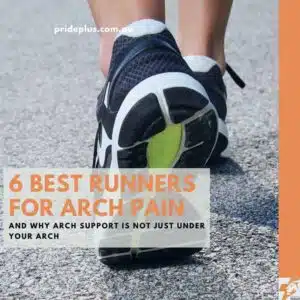What Margot Robbie Taught Me About Symmetry
We were having a discussion on symmetry in clinic and as Ben was talking I was scrolling through insta and something caught my eye. Has anyone else seen the below photo currently circulating the socials of one side of Margot Robbie’s face next to one side of Emma Mackey’s face?

They look pretty alike, hey?!
It’s kind of terrifying how the photo aimed to compare the similarities between Margot and Emma actually looks more like Margot than some other photos of Margot I’ve seen!
For example, here’s a photo of half of Margot’s face mirrored to form the other side. Bizarre that the Margot/Emma mash-up looks more like Margot Robbie than Margot Robbie looks like Margot Robbie!

I digress, the point of this blog post is to discuss symmetry. One of the most common questions I am asked in the clinic is ‘well why has it happened on one side and not the other’? The simple answer is, our bodies are not symmetrical. Our legs and feet, just like Margot Robbie’s face, are not the exact same from left to right.
Being Different Is Cool
Asymmetry is normal, symmetry is the outlier.
Having a slightly bigger, smaller, twistier or stiffer foot on one side means that you can have more risk of some injuries, and less risk of others. How you manage them might be a little more difficult which is where we come in. As podiatrists and physios we look at your contributing factors, what can be changed and what cannot. Then it’s onto getting better, back, faster or fitter – whatever your goals are.
So what could vary so much on either side that we end up with unilateral injuries?
Different Foot Sizes
Let’s begin with perhaps the most obvious difference in symmetry – foot size.
How common is it to head to the shoe store and feel like you need a different size for each foot?
Varying foot sizes is very common and completely normal! However, sometimes if one shoe is a little too tight, we may end up with increased friction or compressive forces on that side. This can result in a myriad of podiatric complaints, including ingrown toenails, corns, callus, the formation of bunions, neuromas and other compressive injuries.
Conversely, if one side is a little too loose, that foot may be forced to clutch and grab in order to keep the shoe in place. This can create extra load for the tendons that extend into our toes. Additionally, a shoe that slips on one side can result in rubbing at the back of the heel, and subsequent blistering or callus.
If you find your symptoms are lop-sided, and know you have a slight variance in shoe size, it might be worth looking into your shoe choices and trying to find something that better suits both foot sizes. Removable sock liners and extra inserts can also help create some room where it feels cramped, or fill in the space when you feel like your foot is swimming around a little!
Different Movement and Build Symmetry
Moving on to the wide world of gait analysis and biomechanics. Put simply, we’re just not the same on both sides of the body.
You may have one foot that is super mobile, and one foot that’s more stiff, a very common presentation we podiatrists encounter. These inherent differences in symmetry can be due to the location of joint axes as well as our differing bony morphology (the size and shape of our bones) from left to right.
What may come as a surprise is that very few people actually have symmetrical muscle tone from one side to the other. This could be due to previous injury compensation, leg favouritism (when walking, standing or at the gym), limb length discrepancies or the movement actions required by some sports.
Here’s a photo of the great Rafa Nadal. Note the obvious size difference in symmetry in his left arm muscle bulk compared to his right. Being the left-handed machine that he is, it’s no surprise he has such asymmetry across his body.

Less muscle bulk on one particular side may make that side more susceptible to injury. Further up the chain, the upper leg, hips and back may also play a role in the mechanics of the feet during gait.
Any of these small asymmetries can contribute to differences down at foot level.
Here’s a test of your symmetry, try doing slow calf raises on one foot.
How many can you do?
Now try on the other. Is your strength exactly symmetrical? I know mine certainly isn’t!
Symmetry & How We Can Help
A podiatrist or physiotherapist can identify differences from the left to the right side of your body, and provide advice for the best way to even out the imbalances that may be causing injury.
Something exclusive to podiatry is that we can order 3D printed unique orthotics for your unique feet. That’s right (or left *wink*). If you have a more mobile foot on one side, or if it’s a little longer on the other, your foot will be scanned, and your custom foot orthotic can be prescribed and printed to your exact needs!
And to reiterate again, asymmetry is normal.
If you’re wondering why you are experiencing so much pain on one side and not the other, an assessment by a podiatrist and/or physiotherapist would be beneficial to you!
You know what they say, ‘same same but different’!




